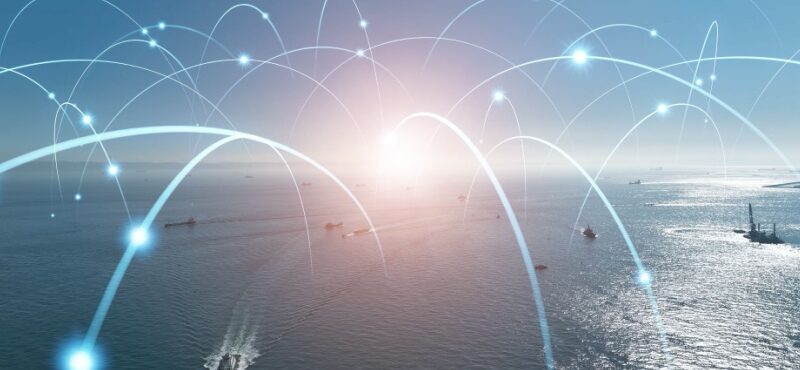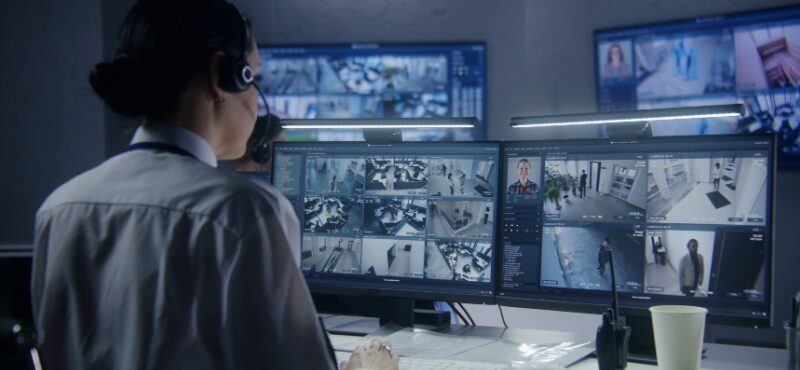In today’s interconnected world, reliable communication is critical for businesses, emergency responders, and the public. However, in high-density buildings like hospitals, office towers, airports, and shopping centers, maintaining strong and consistent signal coverage can be challenging. Structural materials, complex layouts, and sheer size often block or weaken signals, leading to “dead zones” where communication is unreliable. Distributed Antenna Systems (DAS) provide an effective solution to these challenges, enhancing signal coverage and ensuring seamless communication in even the most complex environments.
What is a Distributed Antenna System (DAS)?
A Distributed Antenna System (DAS) is a network of antennas strategically placed throughout a building to amplify and distribute wireless signals. DAS is designed to improve signal strength for cellular, radio, and emergency communication networks, ensuring consistent coverage across all areas, including basements, stairwells, and other traditionally hard-to-reach locations.
DAS typically consists of three main components: a donor antenna that captures external signals, a signal amplifier that boosts the signal, and a network of internal antennas that distribute the amplified signal throughout the building. This setup ensures that users can enjoy strong and reliable communication, regardless of their location within the building.
The Challenges of Signal Coverage in High-Density Buildings
High-density buildings often pose unique challenges for signal coverage due to their construction and usage patterns. Materials like concrete, steel, and glass can block or weaken signals, while the presence of multiple floors and complex layouts creates additional barriers. Furthermore, large numbers of occupants using mobile devices simultaneously can overload networks, leading to dropped calls and slow data speeds.
These issues are particularly problematic for businesses and emergency responders, where reliable communication is essential for operations and safety. DAS addresses these challenges by providing a scalable and efficient solution that enhances signal strength and ensures seamless connectivity.
Key Benefits of DAS in High-Density Buildings
Seamless Coverage Across All Areas: One of the primary benefits of DAS is its ability to provide consistent signal coverage throughout an entire building. From underground parking garages to top-floor offices, DAS eliminates dead zones and ensures that users can communicate without interruption. This is particularly important in buildings with complex layouts or areas that are shielded from external signals.
Enhanced Communication for Emergency Responders: In emergencies, reliable communication is critical for first responders to coordinate their efforts and ensure public safety. Many jurisdictions require high-density buildings to have DAS installed to meet public safety codes and ensure that emergency communication networks function seamlessly. By enhancing radio and cellular signals, DAS allows first responders to stay connected and respond quickly during critical situations.
Improved User Experience: For businesses, providing strong and reliable communication for employees, customers, and visitors is essential. DAS improves cellular signal strength, enabling faster data speeds, clearer voice calls, and enhanced overall connectivity. This ensures a positive experience for everyone in the building, from office workers making important calls to shoppers using mobile apps in a retail environment.
Scalability and Flexibility: DAS is highly scalable, making it an ideal solution for buildings of all sizes and uses. Whether retrofitting an existing structure or installing a system in new construction, DAS can be customized to meet the specific needs of a building. Additionally, DAS can support multiple carriers and technologies, ensuring that all users, regardless of their service provider, enjoy reliable connectivity.
Applications of DAS in High-Density Environments
Hospitals and Healthcare Facilities: Reliable communication is essential in healthcare settings, where lives often depend on timely and accurate information sharing. DAS ensures that medical staff can communicate seamlessly, even in areas where signals might otherwise be weak, such as operating rooms, basements, and emergency departments.
Airports and Transportation Hubs: Airports and transportation hubs handle large volumes of passengers and staff, creating significant demand for reliable connectivity. DAS helps manage this demand by ensuring strong signals throughout the facility, enabling smooth communication for both operational teams and travelers.
Office Buildings and Corporate Campuses: In office environments, productivity depends on seamless communication. DAS supports high-speed internet, clear voice calls, and reliable data connections, ensuring that employees can work efficiently and without interruption.
Retail and Entertainment Venues: Shopping malls, stadiums, and entertainment venues benefit from DAS by enhancing the customer experience. Whether it’s enabling mobile payments, supporting app-based services, or providing reliable connectivity during events, DAS ensures that visitors stay connected.
The Future of DAS Technology
As wireless technology continues to evolve, DAS is becoming even more advanced. The integration of DAS with 5G networks promises faster speeds, lower latency, and greater capacity, further enhancing its capabilities in high-density buildings. Additionally, advancements in artificial intelligence and the Internet of Things (IoT) are enabling smarter DAS solutions that can adapt to changing demands in real time, providing even greater efficiency and reliability.
A Smarter Solution for Seamless Connectivity
Distributed Antenna Systems are transforming communication in high-density buildings, addressing the unique challenges of signal coverage and ensuring reliable connectivity for users. From enhancing public safety to improving the user experience, DAS provides a scalable and efficient solution that meets the demands of modern buildings.
For businesses and organizations looking to enhance their in-building communication systems, Highland Wireless offers expert DAS solutions tailored to your needs. Contact Highland Wireless now to learn how we can help you achieve seamless connectivity and support your communication goals.





